This article is from 2022, if you are interested in topics related to the elimination of HPV cancer you can also read:
- Cervical cancer elimination efforts boosted by simpler ways to identify and treat pre-cancerous lesions
- Global elimination: securing a future free from cervical cancer
- Harald zur Hausen: the virologist who opened a pathway to eliminating cervical cancer
Instead, for HPV vaccination and screening policies in the world we have also written:
- HPV vaccination: generating demand by spreading knowledge and information
- HPV vaccination set to be rolled out across Turkey… with controversial exclusions
- A success story in Romania’s struggle to control cervical cancer
- Hospice caring for women with cervical cancer launches own mobile screening clinic
- From stigma to strategy: Egypt’s journey in combating cervical cancer
Gynaecologist Shalini Singh remembers the Pap smears she carried out until around twenty years ago, when she was working at the prestigious All India Institute of Medical Sciences, in New Delhi. “We had about 15 Pap smear bottles per day in the outpatient department, which were sent by the pathology department, and the Pap test was done for symptomatic women or those undergoing major surgery,” she says.
The All India Institute of Medical Sciences is the premier tertiary care hospital in the country, yet had the capacity to process no more than 15 Pap smears a day. The situation in other hospitals across the country was far worse. The only place Pap smear testing could be accessed was in urban tertiary care centres with their own pathology services, with the smears used mostly in women who were already showing symptoms of cervical cancer or as a test before undergoing a hysterectomy.
In a country that has one of the highest burdens of cervical cancer in the world, Singh’s anecdote illustrates the historic lack of any programme or capacity to use Pap smears in the cervical cancer screening role for which they are globally best known.
In India, more than 77,000 women die from the disease and a further 125,000 are diagnosed, every year. That’s a daily average of more than 200 young women, mothers, breadwinners, grandmothers whose lives might well have been saved if they had had access to, and participated in, a quality-controlled screening programme.
Today, as director of India’s National Institute of Cancer Prevention and Research (NICPR), Singh is one of those at the forefront of national efforts to roll out cancer screening in India in accordance with guidelines for population screening for cervical, breast and oral cancers, published in 2016.
With national rates of cancer screening coverage in general, and cervical cancer screening coverage specifically, currently hovering around 2%, this will be a big task. How successful it proves, and the lessons learned along the way will be of interest to resource-poor countries well beyond India itself.
Cancerworld talked to people involved in its delivery at all levels to see how it is coming along.
The plan
Low-tech screening techniques
India has spent decades developing and piloting low-tech sustainable approaches to cancer screening that can be delivered at scale by healthcare professionals and community workers with the right basic training and infrastructure. The 2016 cancer screening guidelines represent the fruit of that work ‒ the move from a series of pilots to a programme to roll out the implementation, at state level, to cover India’s entire population of 1.4 billion.
In the case of cervical cancer, rather than using the Pap smear, where evaluation has to be done by cytologists under a microscope, the guidelines recommend the use of visual inspection with acetic acid’. This technique relies on trained healthcare professionals checking with the naked eye for signs of pre-cancer or cancer in a cervix that has been swabbed with a solution of 4% acetic acid. Screening for breast cancer is done by clinical breast examination, which has proved effective when delivered by trained health workers. Checking for signs of oral cancer can be done visually, with the necessary basic training.
The guidelines state that all women between the ages of 30 and 65 should be screened for breast and cervical cancer once every five years, with oral cancer screening to be done for both men and women in the same age group.
Delivery
Delivery of the screening service relies heavily on existing public health infrastructures, which have traditionally focused largely on maternal and child health and infectious diseases. Breast, cervical and oral cancer screening should be done at sub-centres and primary health centres (see box), with suspicious lesions being referred upwards the community health centres and district hospitals for diagnostic tests and, where necessary, treatment.
Public healthcare infrastructure in India
The population of India is served by a public health infrastructure that is designed to cover the whole population.
- At its base is the sub-centre, which should cater to a population of around 1,000. This is present at the village level and deals primarily with health promotion, nutrition and immunisation.
- The next tier up is the primary health centre (PHC), which caters to around 30,000 people, is staffed with a medical officer, and provides preventive and curative services.
- Above that are the community health centres (CHC) ‒ third tier facilities ‒ that provide emergency and lab services, in addition to PHC services, and cater to populations of around 120,000. It is this tier that focuses on non-communicable diseases.
- The fourth tier includes district hospitals, which have more staff, including specialists, and provide 24-hour emergency care.
The cancer screening guidelines mandate that the skilled work of conducting the screening tests should be carried out by community-level nurses ‒ also called Auxiliary Nurse and Midwife (ANM). They do the cervical swabbing with acetic acid and visual inspection of the cervix, and they carry out the clinical breast examinations and the oral cancer inspection, alongside screening for hypertension and diabetes. For cervical cancer screening, the ANMs are to be supervised by a Lady Health Visitor who is usually their supervisor or a Medical Officer who is a medical doctor.
In rural areas, which account for around 70% of the population, that work should be supported by community health workers called ASHAs ‒ Accredited Social Health Activists. Their role is to pave the way for screening visits by conducting a door-to-door survey of all adults in the village, to capture their age, weight, waist circumference, medical history and risk factors such as tobacco and alcohol use, and ensure those risk factors are noted in a ‘family folder’.
ASHAs are also tasked with the crucial role of explaining to the villagers about non-communicable diseases, the risk factors and the value of early detection, to encourage them to attend the screening at their local sub-centre.
That’s the plan anyway.
How’s it going?
Government figures give a very upbeat assessment of how the programme is going. They state that, up until June 2021, 20 million screenings for cervical cancer have been conducted together with almost 30 million screenings for breast cancer and 57 million screenings for oral cancer. That’s impressive by any standards, particularly given that the programme has only really been going for six years, and that the Covid pandemic largely hijacked primary care resources for two of them.
There are good reasons, however, to question those figures, both in terms of the numbers, and also the quality/impact of what has been done.
Fewer than one in four had a ‘lady medical officer’ ‒ the position designated in the guidelines to supervise the cervical screening
A study published in 2020 assessed the facility readiness for cervical cancer screening at four levels of the healthcare system prior to the initiation of universal screening of cancers, using the data from a district level health and facility survey (DLHS-4). It found that, while the fourth-tier district level and the third-tier community health centre level were reasonably well prepared, the same was not true closer to the frontline, at the primary health centre level. These were accorded overall readiness scores of 0.56 (where 1.0 is full preparedness).
Staffing levels were a particular issue; fewer than one in four had a ‘lady medical officer’ ‒ the position designated in the screening guidelines to supervise the cervical screening carried out be community nurses. They also tended to lack the minimum range of antibiotics. Only one-third had a functioning telephone, computer and internet ‒ all essential in programmes requiring effective data sharing and communication between different levels of the health service.
At sub-centre level, the lowest scores were for infrastructure and infection prevention ‒ lack of facilities for sterilising equipment and safe disposal of hazardous waste.
Gauravi Mishra is an associate professor at the Department of Preventive Oncology at the Tata Memorial Hospital ‒ the internationally renowned cancer hospital in Mumbai that has been driving much of the development and piloting of the low-tech screening techniques. Her assessment of the current state of play with implementing the screening is considerably more cautious than the optimistic picture painted by the Government data.
She points out that implementation is the responsibility of each of India’s 28 states, as responsibility for healthcare lies with states and not the national government. “In most states [cancer screening] is in the form of certain projects taking place in some villages or district level. At the moment, creating awareness in the community is happening but population-based screening is not,” she says.
Even where screening is taking place, there are questions about whether women picked up through the VIA screening as having possible signs of cervical cancer or precancer are being appropriately referred on, says Partha Basu, Deputy Head of Early Detection, Prevention and Infections at the WHO’s International Agency for Cancer Research (IARC).
“The facilities for colposcopy and precancer treatment are very poorly developed, with lack of trained manpower, infrastructure and quality assurance. Even though every state is receiving funds to implement NCD screening, the output in terms of cervical screening is very poor,” he says.
That general assessment seems to be borne out by testimonies gathered by Cancerworld from some of the ASHAs and ANMs who are tasked with delivering the screening programme at the community level.
“Even after screening of a woman is done, she is not told if there is something abnormal or even what symptoms to look out for”
“If the government is saying thousands of women have been screened for breast or cervical cancer, then it is false, it is only on paper,” said one ASHA worker from the state of Haryana in North India who does not want to be named. “The last training on NCDs [non-communicable diseases] was done three years ago. After that, there was a NCD screening camp in one odd place, but they didn’t conduct cancer screening there,” she said.
In the state of Madhya Pradesh in central India, Lakshmi, another ASHA, told Cancerworld that they have not been properly trained on cancer. “Even after breast or cervical screening of a woman is done, she is not told if there is something abnormal or even what symptoms to look out for. We ourselves do not know; how will we tell her?” she asks.
ASHA training sessions were fairly common before the pandemic, she said, but in the last few years, there have been no training sessions. “The family folder we filled up, it hasn’t been entered in the computers yet, it is lying in the offices, collecting dust.”
Payment ‒ or lack of it ‒ is a factor contributing to the lack of progress, in the view of Ramkishor Bhadoriya who works as a multi-purpose worker (same as a community nurse, or ANM) in Mehgaon, Madhya Pradesh. He says there’s little motivation to conduct the screenings because the incentives for their NCD-related tasks have not been paid. He also mentions technical issues, “The tablet that is given to us to enter the data, it is extremely slow, it takes one hour to feed one person’s information, we are not able to use it at all.”
Another ANM from Madhya Pradesh baulked when asked whether she conducted the cancer screening, “Our work is immunisation, we are not doctors to screen for cancers,” she says.
“The tablet that is given to us to enter the data, it is extremely slow, it takes one hour to feed one person’s information”
Shalini Singh of the National Institute for Cancer Prevention and Research understands her feelings. “While the guidelines say that ANMs should be screening for cancer, they are not skilled to be able to do that job.” In practice, she says, it is usually the medical officer, gynaecologist or a nurse who conducts the cervical cancer screening in the community, after being trained.
Addressing the training gap
While high-tech equipment may not be needed for effective cancer screening, knowledge, skill and experience is. This requires training to be well planned and structured ‒ an area that the operational guidelines do not adequately address, according to Basu from IARC.
Most countries using VIA-based screening would have a ‘master trainer’ system, he says, with master trainers posted in centres where VIA positive tests are identified and referred on in sufficient numbers to enable trainees to learn to differentiate between positive and negative tests. The trainees would spend 1‒2 weeks at the centre, and would have the chance not just to see for themselves a good number of both positive and negative cases, but also to perform the procedure themselves. The system requires trainees to take a competency assessment before certification.
This isn’t happening in India. “Many of the ANMs/nurses start doing VIA without having seen a single positive case,” says Basu. “They only get to see book images. The same is true with colposcopy and pre-cancer management. Those who drafted the operational guidelines took it for granted that all the gynaecologists will be trained to perform these procedures. In reality, most gynaecologists do not see this equipment during their training.”
“Many of the ANMs/nurses start doing VIA without having seen a single positive case”
This is where the National Institute for Cancer Prevention and Research comes in. The Ministry of Health has now designated the NICPR as a training hub for the entire country. Working with ECHO India, the Institute has designed a curriculum for medical officers, gynaecologists, pathologists, dental surgeons and nurses. Training is conducted through videoconference, presentations and case studies. There is also a pre- and post-test and in-person training (3‒5 days) for the healthcare providers.
Sree Devi Meerum, the doctor at the primary health centre in Lepakshi, Andhra Pradesh, gives a very interesting account, in The ECHO Effect of her own experience using the training programme, and then going on to train and mentor the community nurses and ASHAs who work with her.
A number of state governments are now coordinating with NICPR, and nominating the medical personnel who need to be trained. The training courses, which are free of cost for government healthcare providers, are also open to private practitioners who would like to be trained in cancer screening.
To date, NICPR has trained more than 1,138 doctors and dentists and 232 healthcare providers (including doctors from African Union and Nepal). They have also started a course for pathologists, which was booked out in a day. “There is a huge demand for these trainings, but there were no avenues for them to get trained before this,” says Singh.
The ECHO training model
Project ECHO (Extension for Community Healthcare Outcomes) is a ‘telementoring’ model designed for transferring specialist knowledge and experience to other providers, making full use of internet including videoconferencing technologies. The Indian National Institute of Cancer Prevention and Research worked with ECHO India to develop a curriculum for screening for cancer screening.
The ECHO model was developed by Sanjeev Arora, a liver disease specialist at the University of New Mexico Health Sciences Center, in the US, who worried that he could only serve a small section of hepatitis C patients, while thousands more remained untreated as they lived too far from specialist centres. A randomised controlled trial, published in the New England Journal of Medicine in 2011, showed that primary physicians trained by Project ECHO could treat hepatitis C patients as effectively as specialists in a medical institute. Encouraged by the results, the model was replicated all across the US and then the world. Project ECHO has been used by 400 partners in 38 countries across more than 70 focus areas including cancer, diabetes, HIV and perinatal care.
Making the system work
Getting the testing done to a reliably high standard is only part of the challenge, however. Before testing happens, the work must be done to inform women about the risks of cancer, about the benefits of early detection, about what participating in the screening programme entails ‒ and to earn their trust. After it happens, the data recording and communications work has to be done to ensure women are told of their results, and importantly that tests results suspicious for cancers or precancers lead to referrals for further diagnostic tests and, where necessary, treatment.
Every link in the chain has to be done right. An evaluation of the experience of two cervical cancer screening pilots run in Tamil Nadu state, published in a 2013 review in The Oncologist, shows just how tricky this can be.
Tamil Nadu has one of the most robust primary healthcare systems and some of the best healthcare indicators in India, and had already rolled out its population cancer screening programme by 2014 ‒ two years before the national guidelines were published. The 2013 review looked at data relating to pilots run between 2007 and 2010. It found that, despite a coverage of almost 75% of the target, only around half of those who tested positive received diagnostic testing, due to loss to follow-up, and only 13% of women needing treatment received it through the programme.
Reasons cited as contributing to these disappointing treatment rates included lack of transportation to higher-level facilities for diagnostic confirmation and treatment, lack of familial support, cancer-related stigma, and inadequate referral systems. Frequent changes in the personnel due to transfers and attrition were also seen as a factor, because of the constant need for refresher training. The biggest challenge that emerged was the establishment of a mechanism of patient follow-up and quality assurance, since screening was done at the primary level and further diagnosis and treatment happened in the secondary and tertiary centres.
“807 were referred to higher centres for further diagnosis and possible treatment. Yet only 74 women visited the referral centres”
Similar results were found in a 2018 evaluation of the programme in two districts of the state in relation to cervical cancer screening carried out between 2015 and 2016. Out of 2,187 women screened, 807 were referred to higher centres for further diagnosis and possible treatment. Yet only 74 women ‒ fewer than one in ten ‒ visited the referral centres. The follow-up rate was very poor owing to fragmentation of the care continuum, the study’s authors observed.
While the figures are undoubtedly disappointing, looking ahead, the most important thing is that the information has been gathered, reported and evaluated, rather than sitting in family files gathering dust. Tamil Nadu is one of the few states with a mechanism for governance and supervision of their screening programme, and a reliable information system to help with follow-up as well as monitoring and quality control.
These sorts of systems are essential for ensuring women who screen positive get appropriate follow-up, says Basu of IARC. He worries that this aspect is entirely missing from the national programme, and points out that the danger lies not only in failing to treat women who need it, but potentially also overtreating women who don’t. “In the first phase of the programme in Tamil Nadu, he said, hundreds of women underwent hysterectomy just because they were VIA positive.”
Informing and empowering women
That disastrous overtreatment episode highlights the importance of doing the work to ensure women are well informed about the risks of cancer, the benefits of early detection and both the potential benefits of screening and the potential risks of overtreatment.
This is another area where Basu feels much more needs to be done. A 2018 study showed that poor knowledge about cervical cancer and the benefits of screening service availability, as well as “a general sense of well-being, embarrassment or anxiety related to the screening procedure, fear of being judged for lack of modesty, and stigma” were common barriers to screening uptake.
Community mobilisation requires sustained campaigns through different communication channels, but there is no such programme in India, he says. This can only happen when community health workers are themselves aware and convinced, he stresses.
“We have done several studies where we found that the community health workers themselves were not convinced that it was worth it for the women to travel 50 miles and waste a full day for a test, especially when the women do not have any symptoms,” he says.
Other factors such as the stigma associated with cancer, which is viewed as a disease with little return on investment due to low survival rates, as well as gender, also play a role.
“Community health workers themselves were not convinced it was worth it for women to travel 50 miles and waste a full day for a test”
It is especially challenging for women to seek treatment for cancer, due to their internalised role as a care-giver where they have little bargaining power, write researchers Samayita Ghosh and Preethiya Sarkar in an article published in Ideas for India, an online portal promoting evidence-based policy. “Care-averseness is strengthened by notions that utilising care, especially ‘when not needed’, is selfish and antithetical to society’s expected ideals,” they write. Giving a woman a diagnosis of cancer without support to navigate the system, they assert, is detrimental and increases mental stress and the burden of stigma.
If women are given adequate counselling, provision to travel to higher centres and support at the hospitals, the gap between detection and treatment could narrow significantly. In a 2019 study conducted in a slum community in Mumbai, researchers from Tata Memorial Hospital found participation in breast cancer screening to be 90.5%, with referral and treatment rates as high as 75% and 100%.
The contrast with the findings from the Tamil Nadu studies is striking, even taking into account the fact that breast cancer carries less stigma than cervical cancer, and that the Mumbai slums are located close to India’s leading cancer centre.
The Indian cancer screening programme will need to learn from all these findings and evolve to cater to the diverse population and their needs.
Now that the pandemic is less of a burden on primary healthcare, efforts to roll out cancer screening are picking up pace again, says Krithiga Sridhar, a senior research scientist and adjunct associate professor at the Public Health Foundation of India. “The cancer screening at national level is currently just 2%, it’s low, but at least we are starting here. We have a baseline from which we can grow.”
How well India copes with the challenges will determine the success of the country’s cancer screening programme.


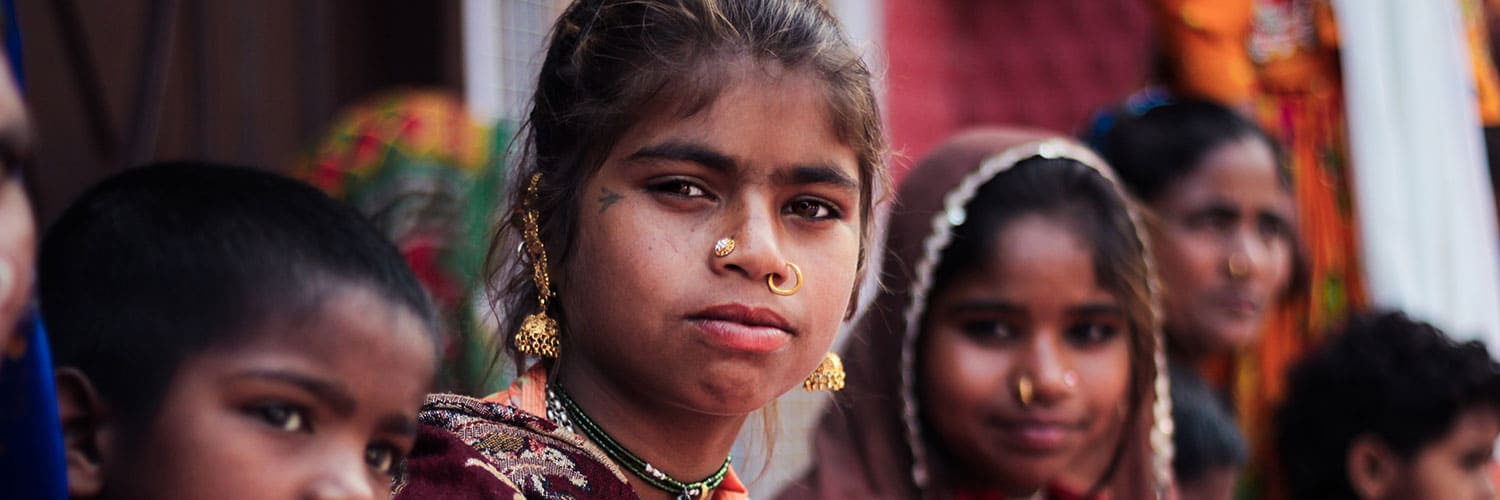
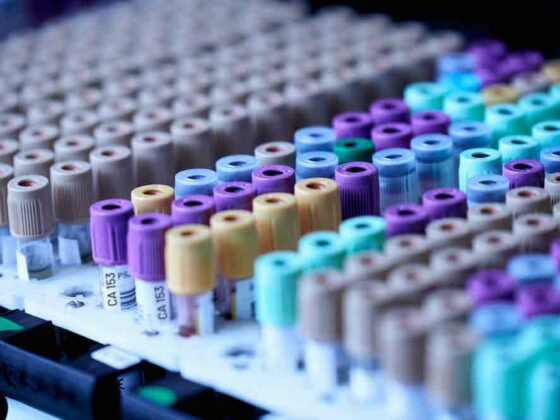
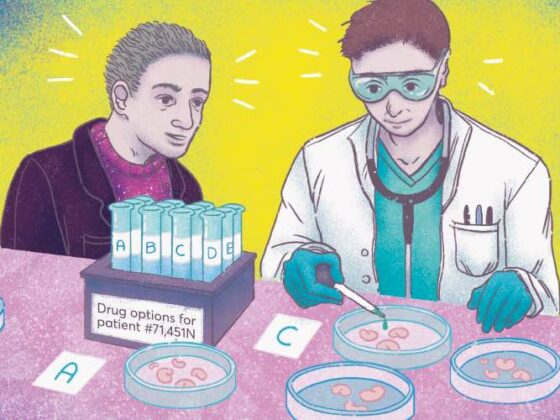


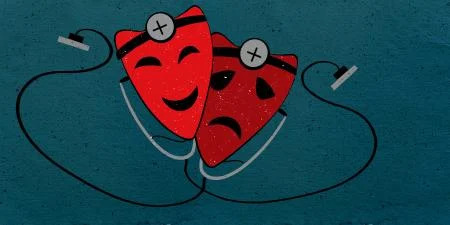

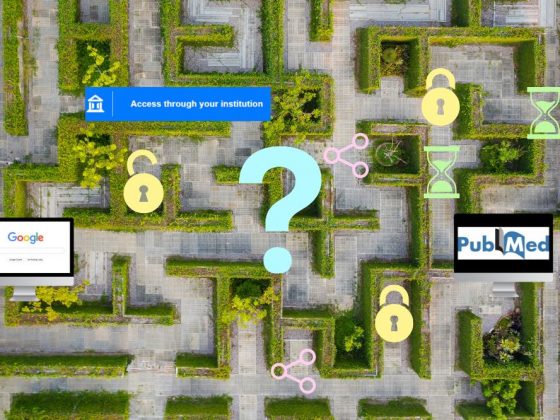

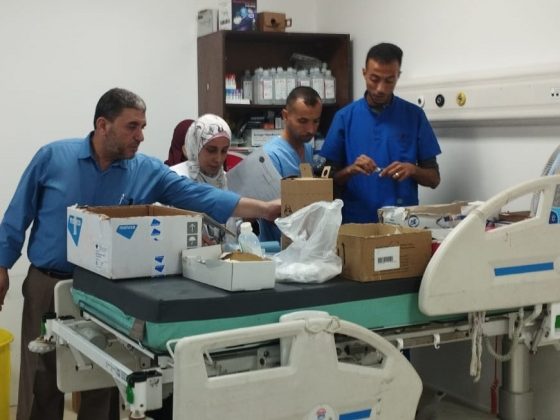

1 comment
“This insightful piece delves into the plan and practice of delivering cervical cancer screening across India, highlighting both strategies and real-world challenges. Essential reading for understanding the efforts to improve women’s health on a national scale.”
Comments are closed.